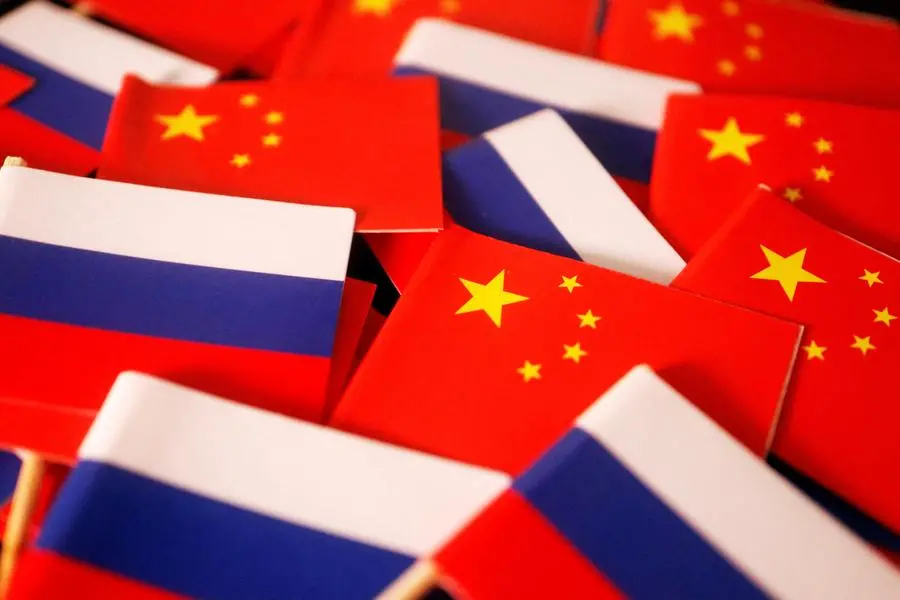PHOTO
(The opinions expressed here are those of the author, a columnist for Reuters.)
SINGAPORE - China's imports of major commodities lost momentum in April as the strong start to the year faded amid uncertainty about the strength and composition of the recovery in the world's second-biggest economy.
Imports of crude oil, coal, iron ore and copper all declined from the prior month, according to data released on Tuesday by the General Administration of Customs.
Crude oil arrivals slipped to the equivalent of 10.3 million barrels per day (bpd) down 16.4% from the 12.32 million bpd in March and also 1.45% below the level from April last year.
Crude imports were the lowest since January and the decline places a question mark over just how strong demand is in the world's largest oil importer.
This is especially the case since strong demand growth in China underpins the bullish forecasts for 2023 from analysts and from bodies such as the Organization of the Petroleum Exporting Countries (OPEC) and the International Energy Agency.
But signs of some sluggishness in key sectors in China, such as manufacturing and construction, are starting to outweigh positive sentiment from rising consumer spending and a rebound in travel as the country reopens after ending its strict zero-COVID policy in December.
One factor worth noting is that China's exports of refined fuels also dropped sharply in April to 3.75 million tonnes, down 31.2% from 5.75 million tonnes in March.
Part of the strength in China's crude imports in the first quarter was driven by a massive 59.8% surge in exports of refined fuels.
This means that part of the decline in April's crude imports can also be linked to lower exports of refined products, such as diesel and gasoline.
The overall picture from China's imports of crude and exports of fuel in April is that the frenetic start to the year in the first quarter has moderated, but it's still too early to say whether April's soft outcome will be replicated in coming months.
COAL EASES
Another energy commodity that softened in April was coal, with customs data showing imports of the fuel used to generate power and make steel eased to 40.68 million tonnes, down from the 15-month high of 41.17 million in March.
However, for the first four months of the year coal imports were up 89% from the same period in 2022 on increased power demand and also as imported fuel was cheaper than domestic supplies in some of China's regions.
The question for the seaborne coal market is whether April's decline marks the start of a weaker import trend.
The main factor that will determine this is whether Chinese domestic prices for thermal coal continue to moderate, and if they do, whether that will result in lower seaborne imports, especially from Australia.
China has only just resumed imports from Australia after ending an unofficial ban that had been imposed in 2020 as part of a political dispute between Beijing and Canberra.
Australian coal imports found a ready market in recent months in China, but this was largely because they were cheaper than equivalent local supplies, a situation that has reversed in recent weeks.
METALS SLUGGISH
Turning to metals and the April trade picture was also sifter, with arrival of iron ore and copper slipping.
Iron ore imports dropped to 90.44 million tonnes in April, down 9.8% from March but up 5.1% from April last year.
For the first four months of the year imports of the steel raw material were 8.6% higher than the same period in 2022 as mills boosted output in anticipation of a rebound in housing and infrastructure activity.
However, recent data suggests that the recovery in these sectors is so far more modest, and signs of a slowing manufacturing sector will add to question marks about the likely path of steel consumption in coming months.
These same concerns are also likely to weigh on imports of copper, with arrivals of unwrought copper and products dropping to 407,294 tonnes in April, down slightly from 408,174 in March, but some 12.5% weaker than in April 2022.
The opinions expressed here are those of the author, a columnist for Reuters.
(Editing by Simon Cameron-Moore)





















